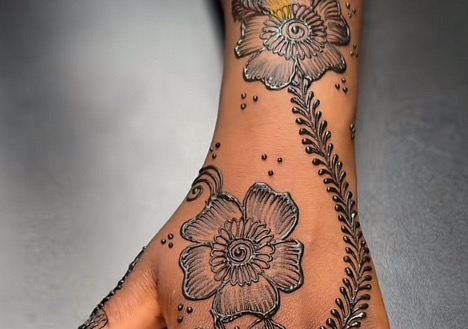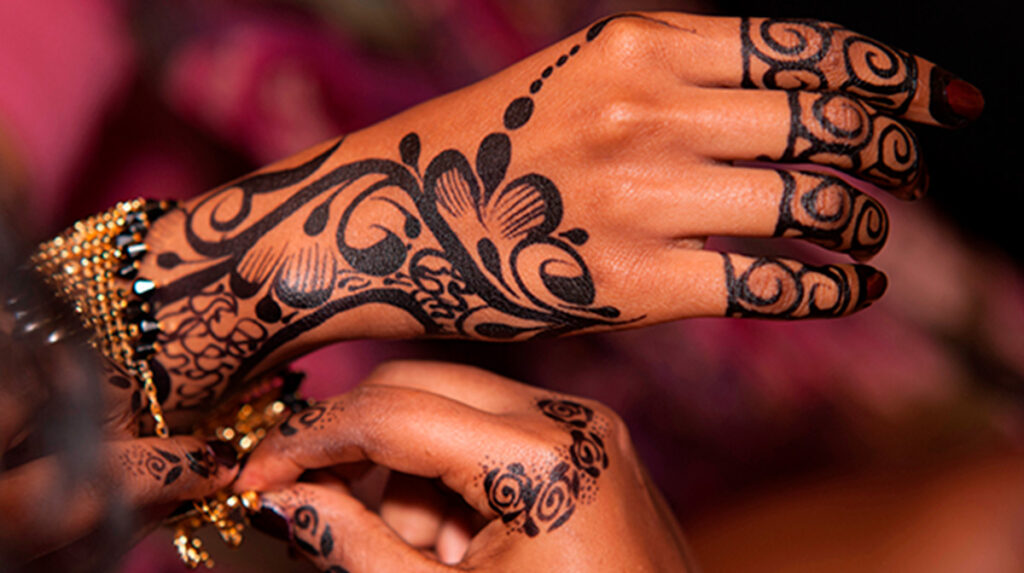Henna is a dye made from the leaves of the henna plant, Lawsonia inermis, and has been vital in African traditions for many years. Its usage is most well-known in the field of tattooing, especially in cosmetic and ceremonial situations. Dating back to the earliest cultures, henna in Africa is associated with customs, cosmetics, and current fashion.
History of Henna in Africa
Henna is a part of the history of African cultures in various ways and with different meanings. Henna has been used for well over five thousand years with evidence pointing to its origin from the Egyptian civilization. Historically, it is said that Cleopatra also used henna to beautify her. Henna was also used in burial practices where the dead bodies were decorated with the dye to ward off evils in the other world.
When henna started making its way through the African continent, it adapted into a big component of the culture and societies of North Africa, West Africa and the Horn of the African continent. In other Arab countries like Morocco, Tunisia, Sudan and Somalia henna is used in weddings, childbirth and festivals celebrated in Islamic culture for instance eidel fiter. These ceremonial uses of henna therefore depict fortunes, fertility as well as charms against evil spirits. In some regions of Africa Henna has also some medicinal use, for example, it was used to treat wounds and burns.
Cosmetic Uses of Henna
Henna, however, has its main use in Africa as an ornament rather than as a dye. It is most passionately used as the tattoo art, with fine patterns on the hands, feet and arms. Henna art has been more associated with bridal aesthetics where women are usually tattooed elaborate patterns to do with love, happiness and blessings to their marriage. These change from one part of the world to the other; for instance, the Libya, and Morocco, the shapes are geometric but in Sudan, a little more floral and the designs are more flowing.

Henna is also applied to improve hair care in the African community. In many regions of Africa, it has been used to enhance hair, strengthen hair strands, and also, as you might expect, to beautify or ornate hair. Natural tannins that are in henna coat the hair thus giving it a sheen and extra bulk. Also, henna makes hair colour naturally beautifully, having a rich red-brown shade, which is valued for grey-haired women of older age. This dye is also used together with indigo to produce deep brown and black and is thus a natural hair dye product to the synthetic variants.
Modern Applications of Henna
Many cultures in Africa, up to the present day, continue employing henna but such uses have gone beyond their earlier usage. Originally used for cosmetic and ceremonial purposes henna has become incorporated in today’s modern beauty and spa services. The naturality concerning beauty practices has made henna art popular in tattooing the body, dyeing hair, and even using it as a natural remedy for the skin.
Henna tattoos, which are referred to as mehndi, have become rather popular not only in the Middle East but also across the world, particularly in Western countries where people enjoy temporary henna decorations. Today numerous fairs and master classes connected with henna are held in Africa and other countries to inform people about the role of this plant in culture and to introduce them to the techniques of its application.
However, today’s henna is also incorporated in many cosmetic products. Henna-based cosmetic products, including facial masks, wash and creams to treat inflamed skin, including acne problems and eczema, have features such as skin cooling and acne elimination. These modern uses of henna invoke the traditional uses of the plant as a healing agent and combine age-old wisdom with modern cosmetic science.
Conclusion
Henna utilization in Africa is not only an aesthetic purpose but a deeply ingrained cultural tradition, and self-assertion. It is for this reason that henna has been kept relevant for modern African women ever since the practice of henna was started by the ancient Egyptians. Since the growing interest in organic beauty products and treatments, henna for body painting, hair dyeing, as well as skin treatments, remains an enduring tradition cherished in African cosmetic practice. This historical and cultural background of henna guarantees its future continuity in African culture.
References
Alassadi, F. (2023). Feminism, Medicine and Culture: How chemical/medicinal properties, international culture and historical significance of Henna shape best practices in application.
McMullen, R. L., & Dell’Acqua, G. (2023). History of natural ingredients in cosmetics. Cosmetics, 10(3), 71.
Nayak, M., & Ligade, V. S. (2021). History of Cosmetic in Egypt, India, and China. Journal of Cosmetic Science, 72(4).
Quainoo, A. K., Gali, N. M., & Mahunu, G. K. (2016). Henna (Lawsonia inermis): A neglected plant in Ghana.


